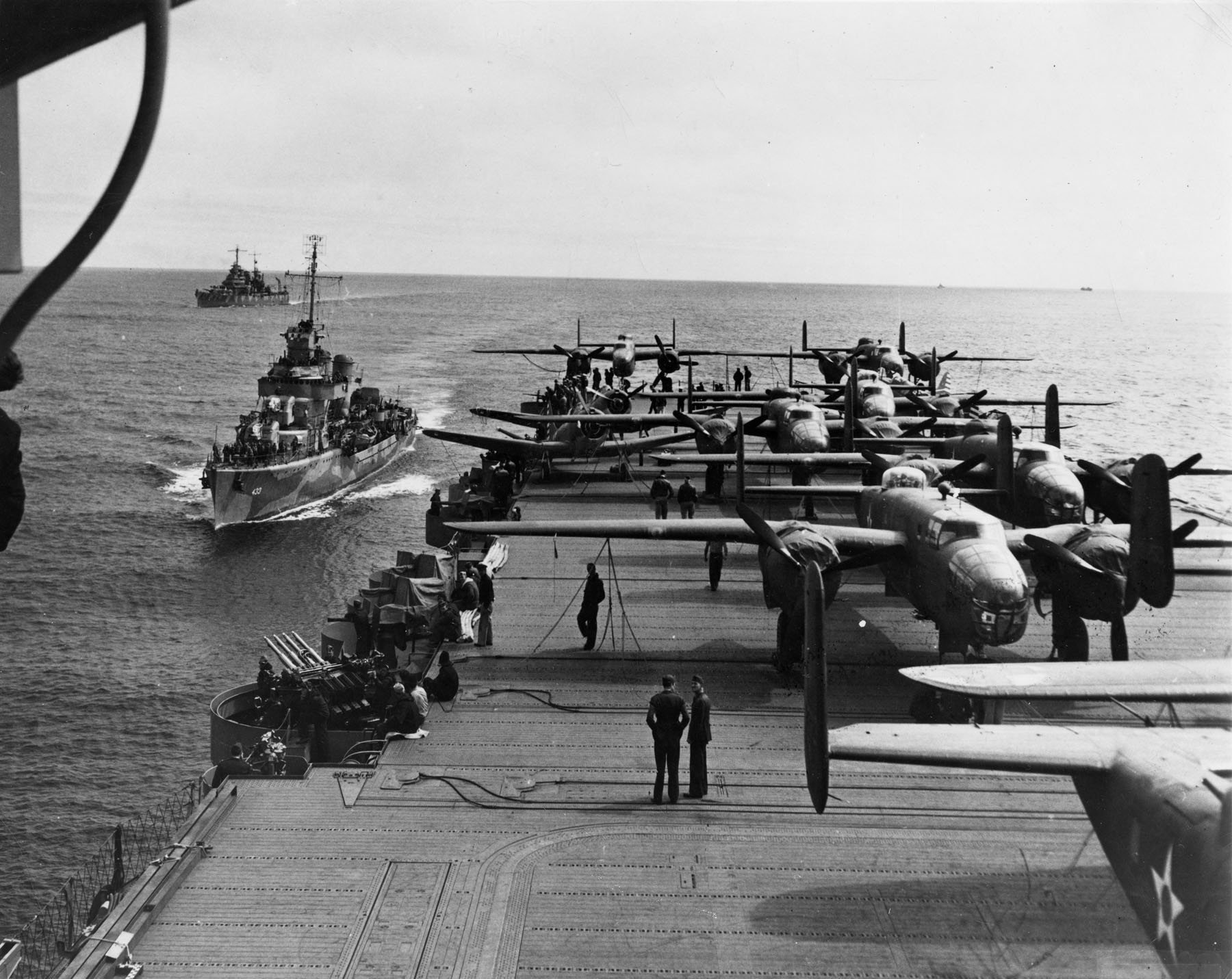Rear Admiral John Meier, Commander, Naval Air Force Atlantic, Interviews Director of the Navy’s History and Heritage Command
This is quite unusual.
Rear Admiral John Meier, Commander, Naval Air Force Atlantic, has started a podcast series where he is interviewing folks to shape out a better understanding of the way ahead for Naval aviation.
But in the context of shaping a way ahead to what we refer to as the integrated distributed force operating through interactive kill webs to achieve escalation dominance in the new strategic environment.
In this episode, Rear Admiral Meier interviews the director of Navy History and Heritage Command, retired Rear Admiral. Rear Admiral Samuel J. Cox and looks back at how the US Navy responded in the period immediately after the Pearl Harbor attack.
According to Rear Admiral (Retired) Cox:
“The senior leaders, the Navy before Pearl Harbor, understood the threat from aircraft. The aircraft carriers were critical to the defense of the battle line because everyone understood that the torpedo bombers from the enemy carriers were a mortal threat to the battleships at sea.
“So the primary purpose of the aircraft carrier was to take out the enemy’s aircraft carrier before they could take your battleship. Problem in the exercises is the carriers would generally kill each other on the opening hours of the war, and then the battleships and surface things would clean up afterwards.
“After Pearl Harbor, didn’t really have that option. Three of the battleships that were damaged were actually operational within two weeks afterwards, because it’s actually hard to sink a battleship with bombs unless you get a lucky hit like the Arizona.
“But they were also gas hogs and slow. And so for the opening phases of war, when you needed aircraft carriers to be fast and mobile to start hitting Japanese bases around the periphery…
“And then with the Doolittle Raid in April of 1942, which was the first time we struck back at a Japanese homeland flying twin-engine army bombers off of an aircraft carrier, the Hornet, which by the way, was actually the Navy’s idea to do that.
“The mobility of the aircraft carriers was key and the battleships that survived Pearl Harbor couldn’t keep up and there was not enough fuel to do them. So they got relegated to the secondary position initially.
“The new battleships that came online starting in 1943… Well, there were several of them that were online in 1942, that once they carpeted them 40-millimeter, 20-millimeter guns, and five-inch guns with radar proximity fuses, then they could defend themselves quite well against aircraft and defended the aircraft carrier as well.
“Earlier carriers were vulnerable. We lost four of the seven that were operational at the start of the war, but we learned a lot really quick. So by the end of the war with the Essex-class carriers, several of those carriers took punishment far greater than those that sank the carriers at the beginning of the war, and yet they survive. Franklin bunker.
“it was the mobility of the carrier in the early days of the war that was the critical attribute that allowed us to one, slow down the Japanese and then eventually start turning the tide.”
Rear Admiral Meier noted: “You touch on a host of really rich topics.
“In particular, the innovation in the interwar period as the carriers came in, the ability for early pioneers in carrier aviation to really develop the tactics that would carry the day, ultimately, at Midway and through the remainder of the war.
“The brilliance of the Doolittle Raid and the ability to launch that, planned and led by a Lieutenant Colonel in the Army Air Corps at that time, fascinating.
“Hard to believe, to me, at how junior a level some of those things were planned.
“But I think I’m most impressed that Immediately after Pearl Harbor, we didn’t sit back and lick our wounds, but our carriers immediately went on the offensive.”
The entire podcast provides several interesting insights on innovation generated in this period of naval history and Pacific combat. Any adversary should understand that the fighting Navy shoots back.
Rear Admiral Meir concluded the podcast as follows:
“I think our Navy is founded on the ideals of the American fighting spirit and skill that carried the day in the Pacific, certainly through the battles that we discussed today, Coral Sea, the early raids, Midway.
“The aspect of learning from history is enormously important. And for our next podcast, I want us to shift the discussion now more towards the direction of the evolution of the Air Wing…
“Our evolution of the Air Wing today and the Air Wing of the future is just that on today’s level of technology at range, at extreme ranges, at distance, bringing in low observables and unmanned aircraft….
“And it’s the lessons of how we trained our aviators, how we developed our tactics, how we developed our material resources for the Air Wing advance, but also took such great advantage of maneuver, lethality, and the American ingenuity and fighting spirit that will prevent or win the wars of the future.”
The photo is taken from the USAF’s historical legacy page on the Doolittle Raid.
The Raid is also symbolic of a major way ahead for the USAF, and the US Navy which is enhanced collaborative con-ops in dealing with the threats from 21st century authoritarian powers.

